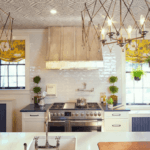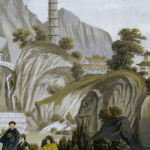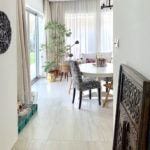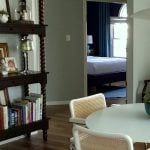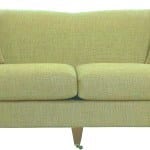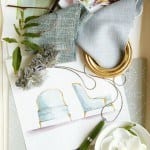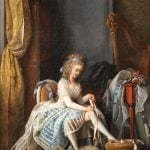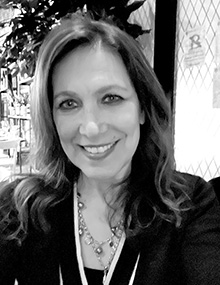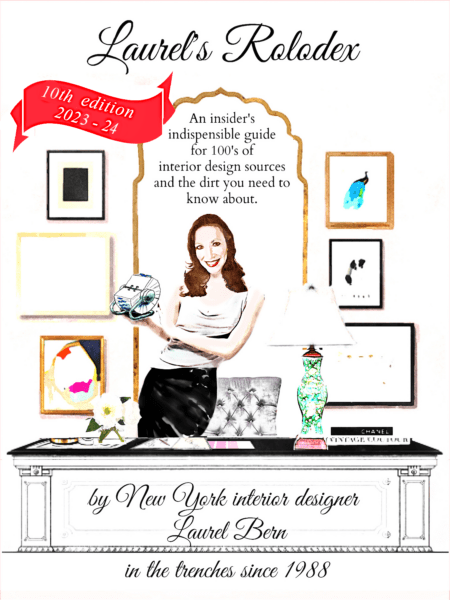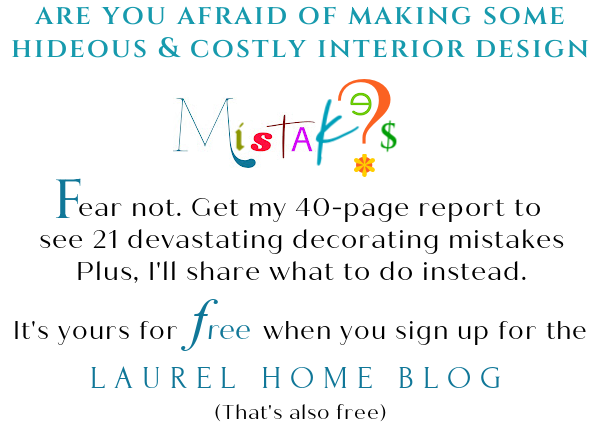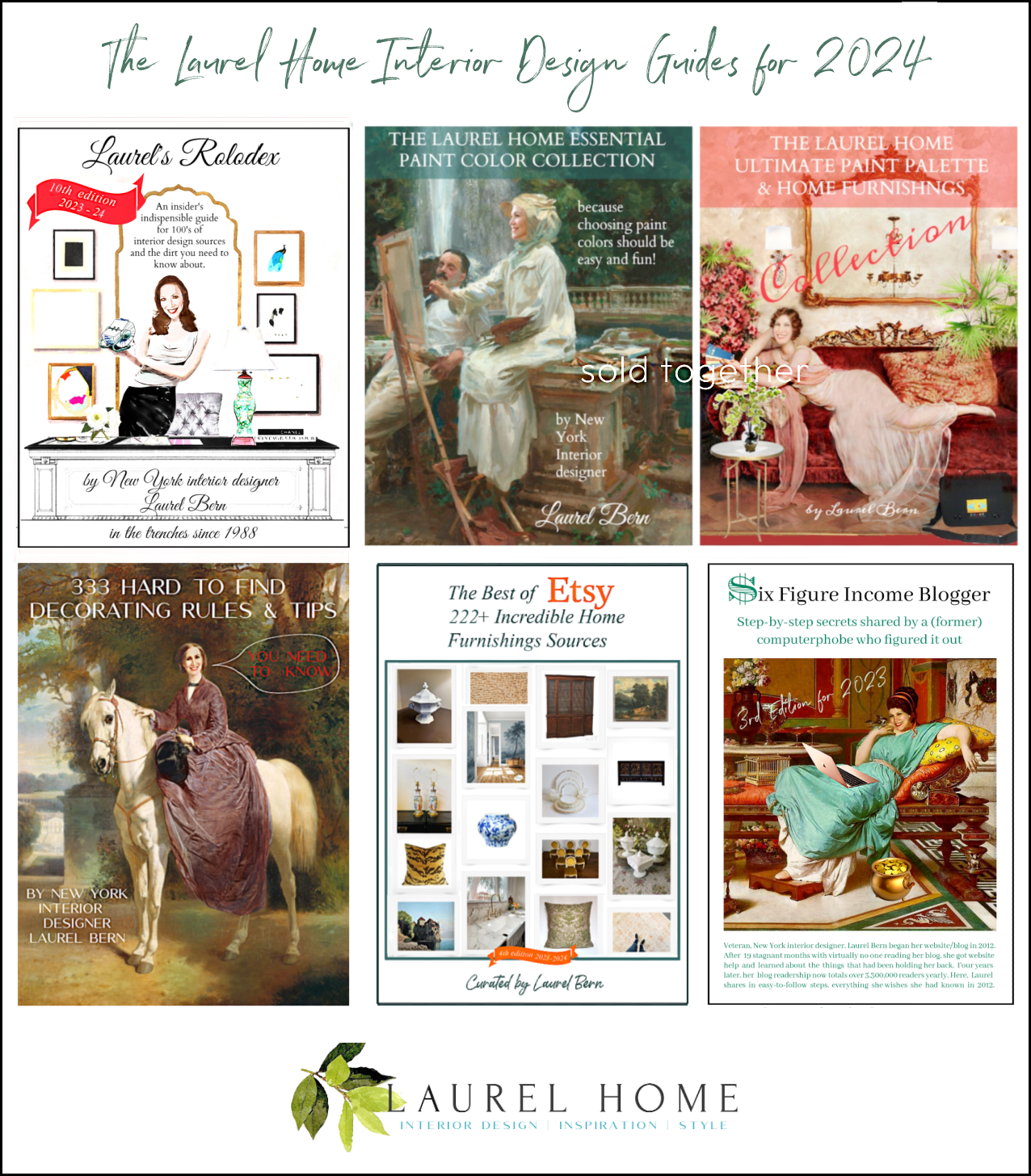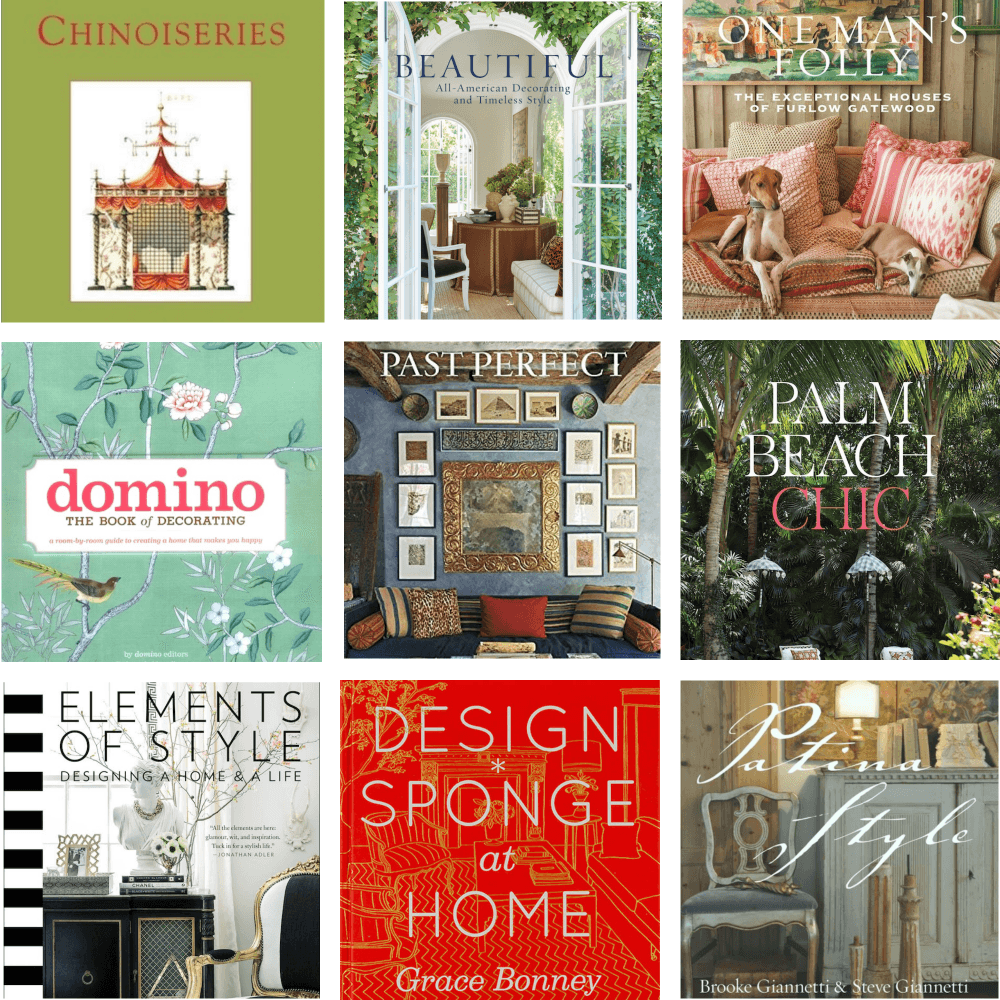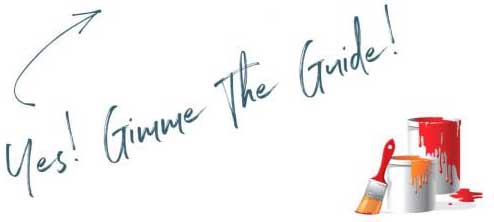Hi Everyone,
This is a follow-up to a post at the bottom of this page, where I shared some images from Fine and Dandy, a company that produces and sells large-scale murals and interesting wallpapers with repeating patterns, some quite bold.
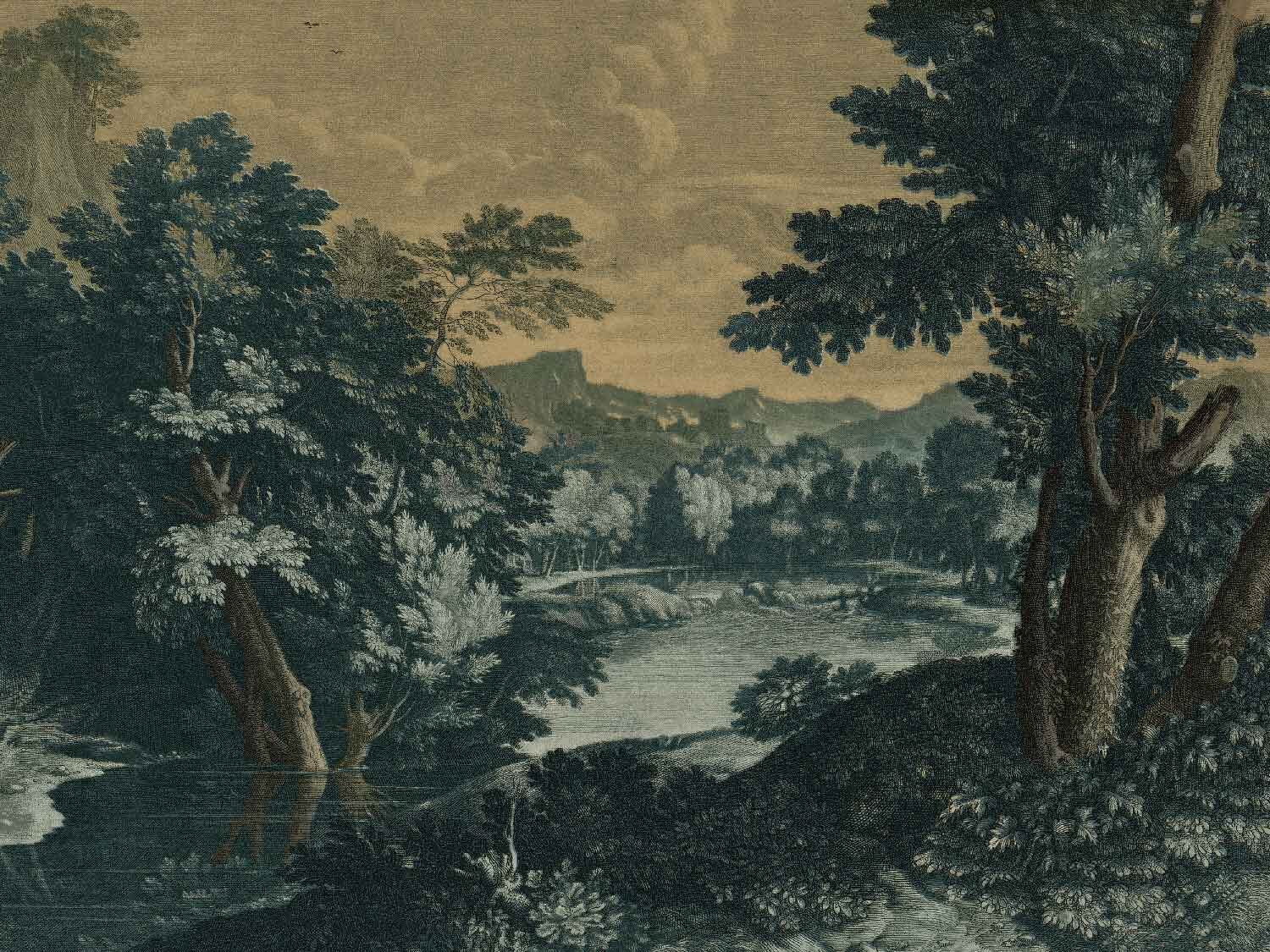
Shortly after I posted some concerns about at least one of their designs, Babylon (above), I received a lovely email from Carla Morano, the company’s co-founder.
Here’s what she said:
Hi Laurel,
We’re reaching out because we recently came across your blog. Thank you for your kind words about our Insta feed and designs. We did want to address some of your concerns about the resolution of our Babylon mural.
Please know that resolution is our highest priority, and we want the best possible installation outcomes for our customers. The swatch images on our website are significantly lower resolution than what is used for production. For example, our website imagery is typically under 300k file size, while our printing files are in excess of 100MB per panel. This is both to ensure an efficient web browsing experience as well as protecting our intellectual property. Believe it or not, we have already been plagiarized.
Oh, I believe it! Often, people scrape entire blog posts I spent 20 hours on, and put them on their websites!
So, if you dramatically enlarge a section of one of our website images, you will get significant pixelation. We would be happy to send you a sample because that is the truest representation of what the mural will actually look like- if you would kindly share your mailing address, we will send this out to you right away.
The Versailles installation, which is a 10-foot mural over a 4-foot wainscot, is a great example of how the resolution appears in person. For exceptionally tall ceilings, this is our recommendation to clients. The standard mural is never printed larger than 10 ft high to preserve detail and quality.
We understand implicitly that quality is paramount, and when one is investing in their home, they want to ensure they will achieve the desired outcome.
To that end, we apply a great amount of rigor to our quality control process. We can’t speak to how other designers approach this, however, we did want to reassure you that this is where we place utmost importance.
If you would kindly reconsider the section related to Fine & Dandy Co. in your blog to more accurately reflect our production methodology, we would appreciate it tremendously. We would be happy to extend our trade discount of 10% should you ever wish to install one of our murals.
Warmest Regards,
Carla Morano
Co-Founder
***
Carla misunderstood me. I didn’t mean to imply that *their* resolution wasn’t large enough to produce a clear image. I realize that what they’re posting on the web is not even close to being the same size file they use to print their nine-foot-high wallpaper murals.

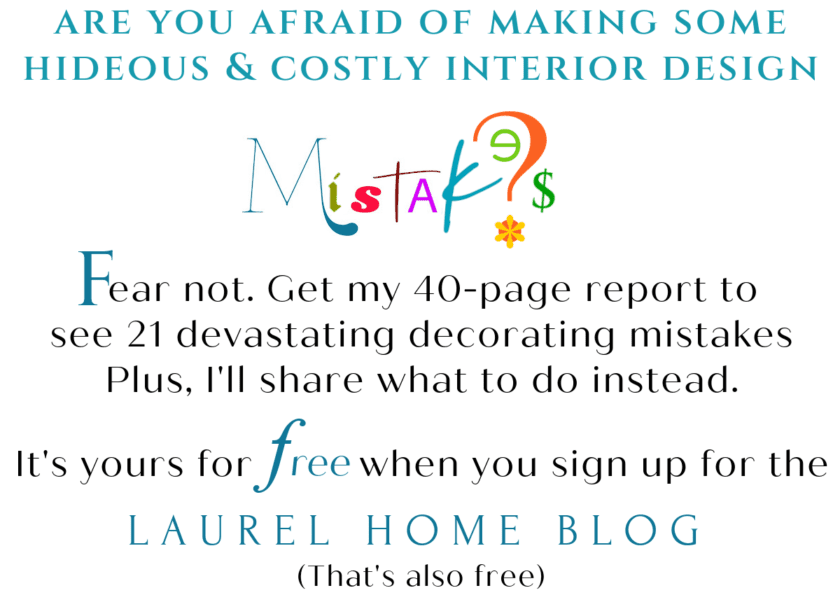
My concern was the scale of the rendering blown up larger than life, compared to the original piece of art. In my return response, I said:
Hi Carla,
Thank you so much for your kind email. I would love a sample of your wallpaper(s) and have no problem revising the post to reflect what you’re saying. I can see that the finished murals are sharp. That’s not the issue I have a concern about. What I’m wondering is what is the scale of the original?
***The etching style is very beautiful, but let’s say the original was 8″ x 12″, and it gets blown up ten times without loss of resolution. Now it’s 80″ x 120″. However, the beautiful fine lines are no longer fine, which might seem odd when viewed from a fairly close distance. This is a universal issue I’m seeing with most manufacturers; some also have pixelation, which, of course, is awful.
I also love the Voyageur mural. I did track down the original by Vernet (see below) and am impressed with how close your mural is to the original sans people. That’s understandable because it’s most likely more marketable without people.
***
;
Carla’s Response:
Hi Laurel,
Thanks for your kind words! We are very mindful of the distinction between a classical work of art that lives beautifully in a frame vs. wrapping a room or wall with it and having it be a “foundation” for a room that will contain other elements. Voyageur is a special mural for sure, I can say that because it’s going in my dining room!
Regarding your question about the original size, this is an excellent question! This varies on a case-by-case basis, but we should definitely talk more about this in our own marketing materials because it is of utmost importance to us; you can expect to see that called out more in our messaging.
For our own original paintings, we paint them on much larger canvases, 3′ h x 5.33′ w – 4.5′ h x 8′ w, and photograph them on museum quality full frame cameras at 600 DPI. This allows us to blow them up to 4x their size and still maintain excellent resolution.
Oh dear; she did not understand my point; as I said, resolution was never in question with this company. I can see that their resolution is superb. I am concerned with line weight and the size of the brush strokes, craze lines, cracks, etc., when the images are blown many times greater than their original composition.
For some of our artworks that are adapted from much smaller works, as in Imaginarium, and a few others start at 12″ x 36″ to Voyageur which started at 45 1/4″ × 64 1/4″ we have various methods of enlarging without the pixelation that you sometimes see on some wallpaper lines. To accomplish this we add design elements like an overall etching finish, or in some cases brush strokes and crackle finish.
***In the case of Babylon we took a very small etching 12″ x 17″ and blew it up to 10′ height.
***Oh dear. Didn’t I just say that this is my concern? It is not pixelation.
We then painted it ourselves in color. And added an additional layer of our own etching. In the case of Babylon, the original was really used as a guide more than anything. We have the benefit of having fine artists on our team including our Co-Founder Shelley Weinreb who has painted several of our original murals.
The samples coming your way will be good indicators of two of our methods. What is the best mailing address to send these to?
Thank you again for revisiting the blog copy, we are tremendously proud of the quality of our products and would want anyone considering a Fine & Dandy Co. mural to know that the final “outcome” is at the core of our business and everything else is built around it.
We’ll get those samples out to you this week!
All my best,
Carla
Three days later, my samples arrived by FedEx.
They sent three mural samples, but two were done on different mediums. We’ll look at the most matte finish on canvas, except for the Zanzibar that came on their highly textured bamboo finish. It’s like grasscloth and also quite matte. Each sample measures 8.5″ x 11″. Since this is roughly 1/200th of the entire piece, they wisely put an image of the entire mural on the back of the sample with a red box indicating the tiny section you’re looking at.
Sample number one is Zanzibar.
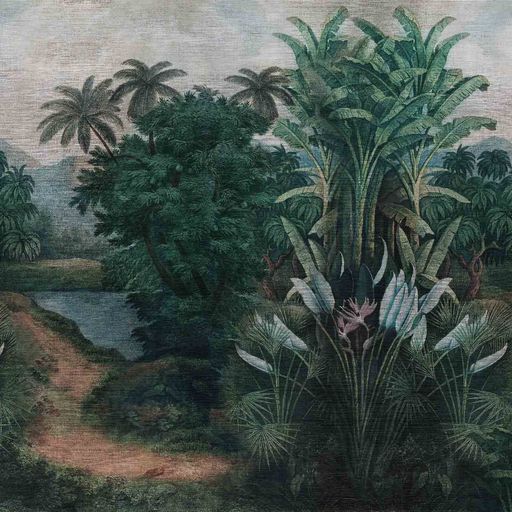
Zanzibar, as shown on the Fine & Dandy Website
This is a lush tropical mural measuring 18′ long x 9′ high. It sells for $1,048.00. That’s a durned fantastic price for such a huge piece of art. FYI, you can order a custom size. They don’t recommend getting anything larger than ten feet. More about that in a sec.
Let’s look at the sample. Please note that I worked very hard to make these as accurate to what they look like in real life.
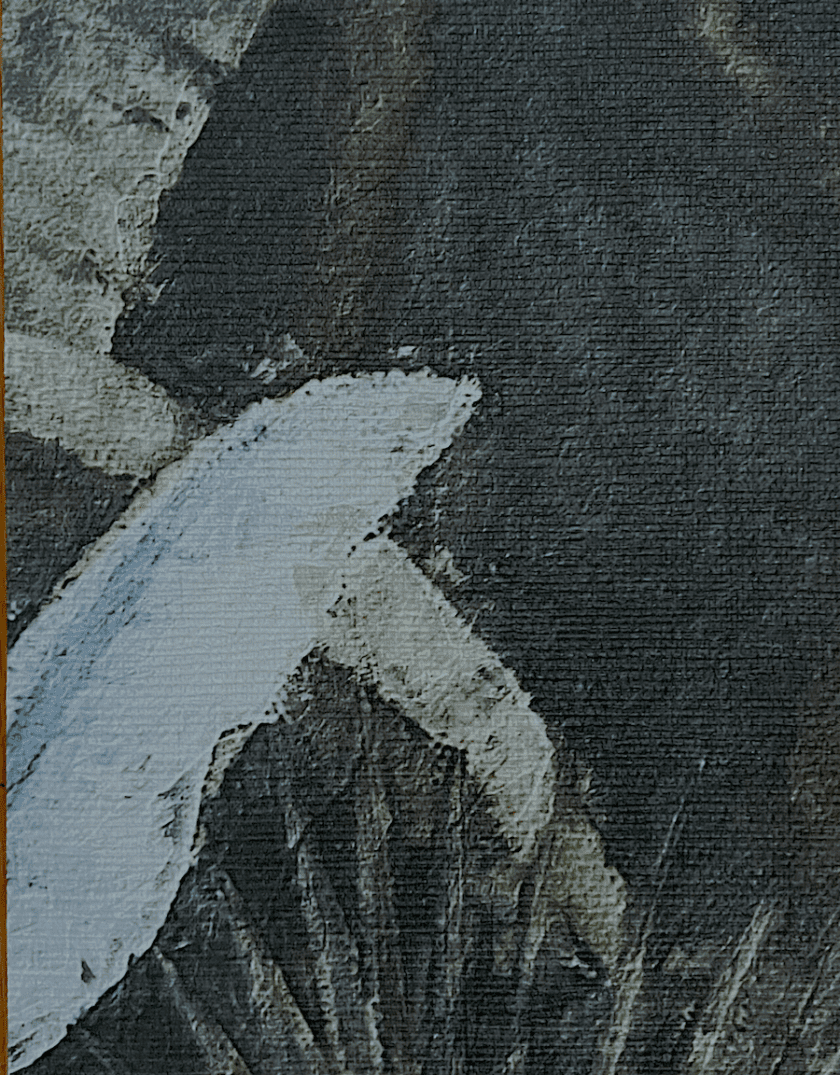
One can see quite clearly that the brushstrokes, while a little large, are mostly in scale with an 8.5″ x 11″ piece of art. I think it helps to think of each sample as an individual piece of abstract art.
I would guess that this is one of their original compositions rendered at about 50% scale.
Blowing up an image to double its original size is usually okay, but more than that, is probably going to look distorted at close range. Can you pick out where this sample is on the mural? It’s on the right side in that big clump of white-ish leaves and the one sticking up the highest. My sample and what is shown on the website are in sync regarding color.
This is a successful piece, but it is large in scale. The good news is that they can scale their pieces down. Most of us can’t handle a mural that’s nine feet high, in any case. So, if you wanted to use this in a bathroom, with an eight-foot ceiling, I would scale it down to about five feet, then use the balance for crown moulding and wainscoting.
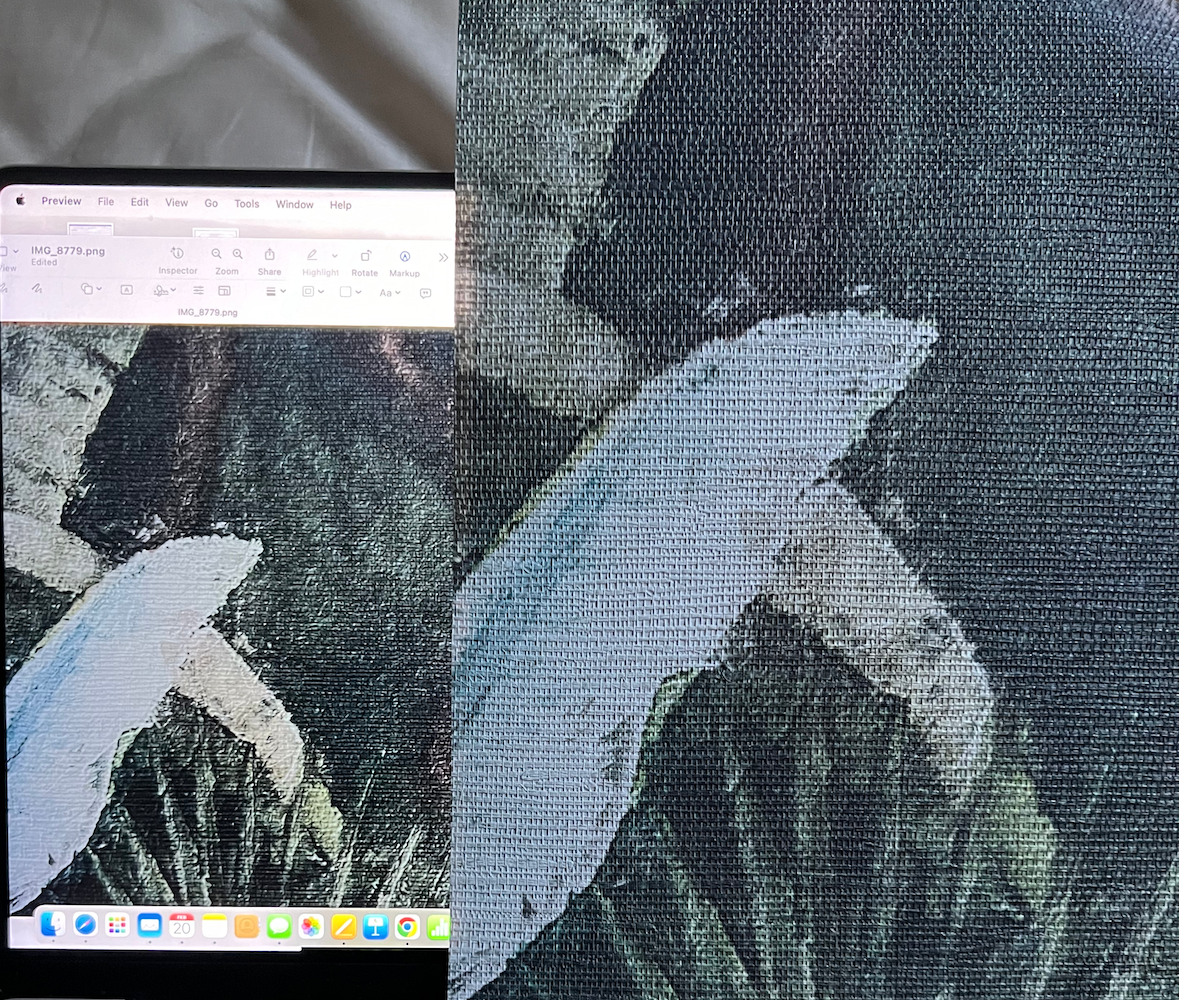
The first image was taken at night and color-corrected to match my sample. The one above was taken in natural daylight. The image on the right is my sample sitting next to the photo shown on my computer. I can’t help but see a dolphin every time I look at this.
Sample number two is a reproduction of a fine piece of art, Moonlight, by one of my favorite artists, Claude-Joseph Vernet.
Can you tell which one is the original?
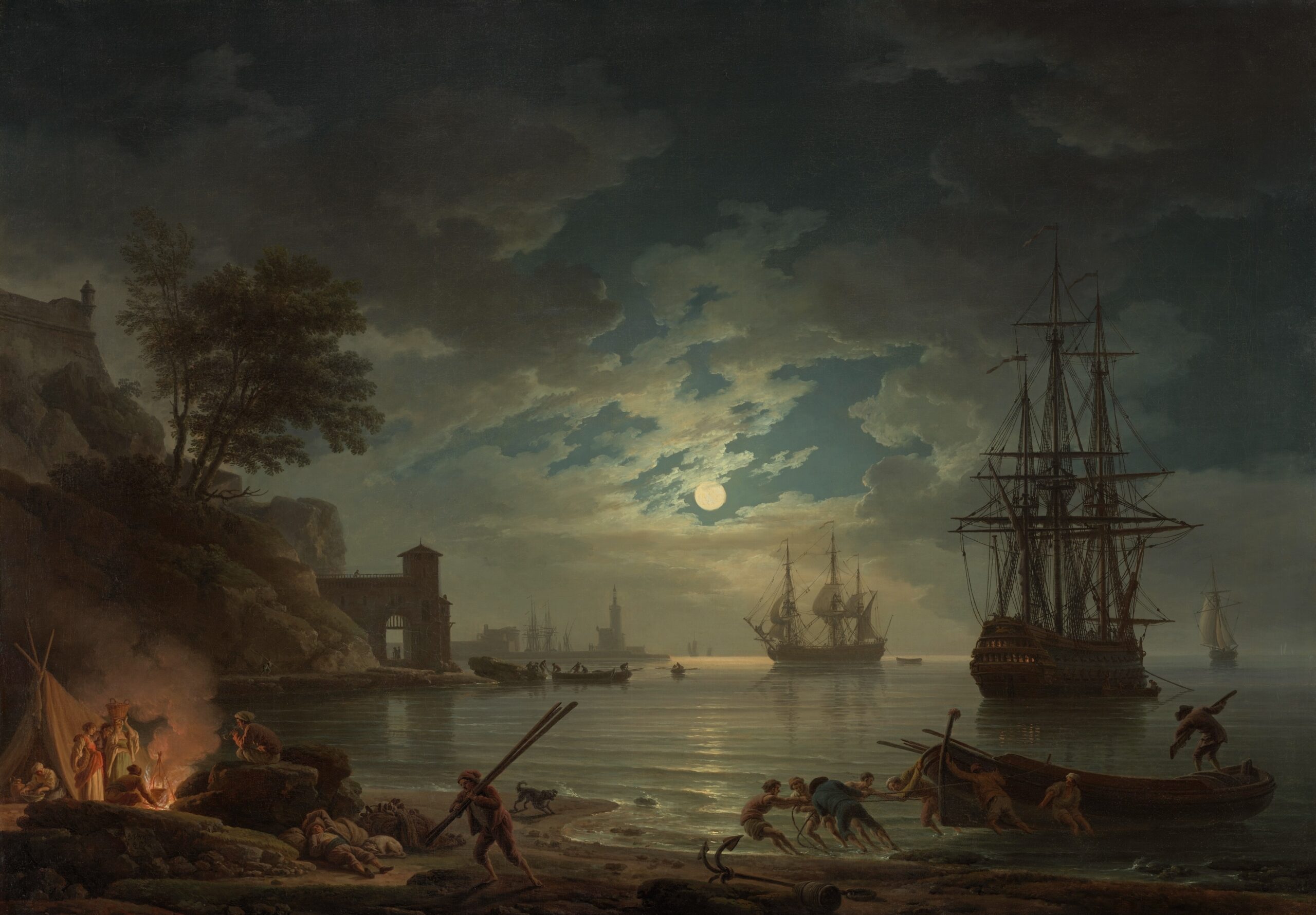
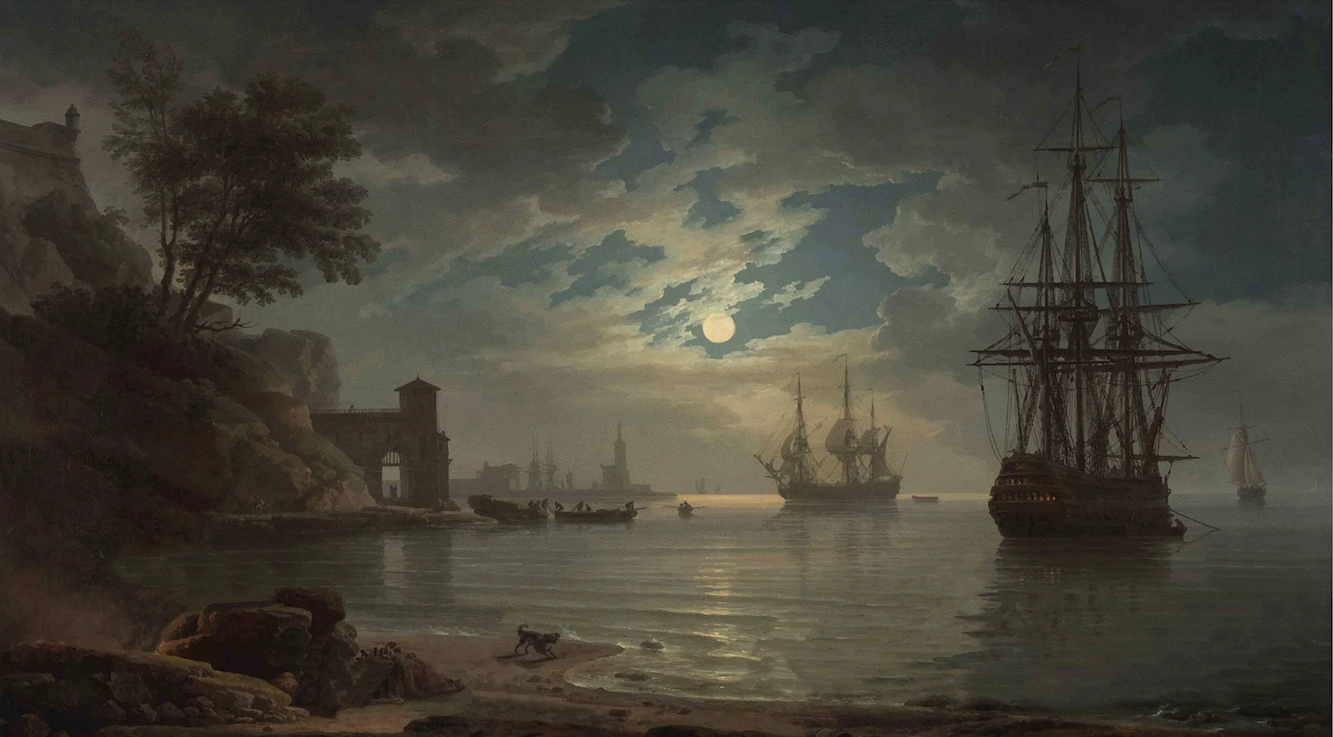
Yes, number one is the Vernet. The Bottom one is the Voyageur mural from Fine & Dandy.
I’m impressed with how close they came to the original sans the people. I usually don’t mind people on murals if they are well done, but some people don’t like people.
(They’re the unluckiest people in the world.) Sorry, I couldn’t resist.
The original Vernet is a large painting at 45 1/4 × 64 1/4. However, the F & D mural is 108″ x 144″. While the brushstrokes and cracks are a little large, it doesn’t bother me, at least not on the sample. From a distance of five feet, it looks fine. And yes, I’m wearing my glasses!
Now, let’s look at my sample:
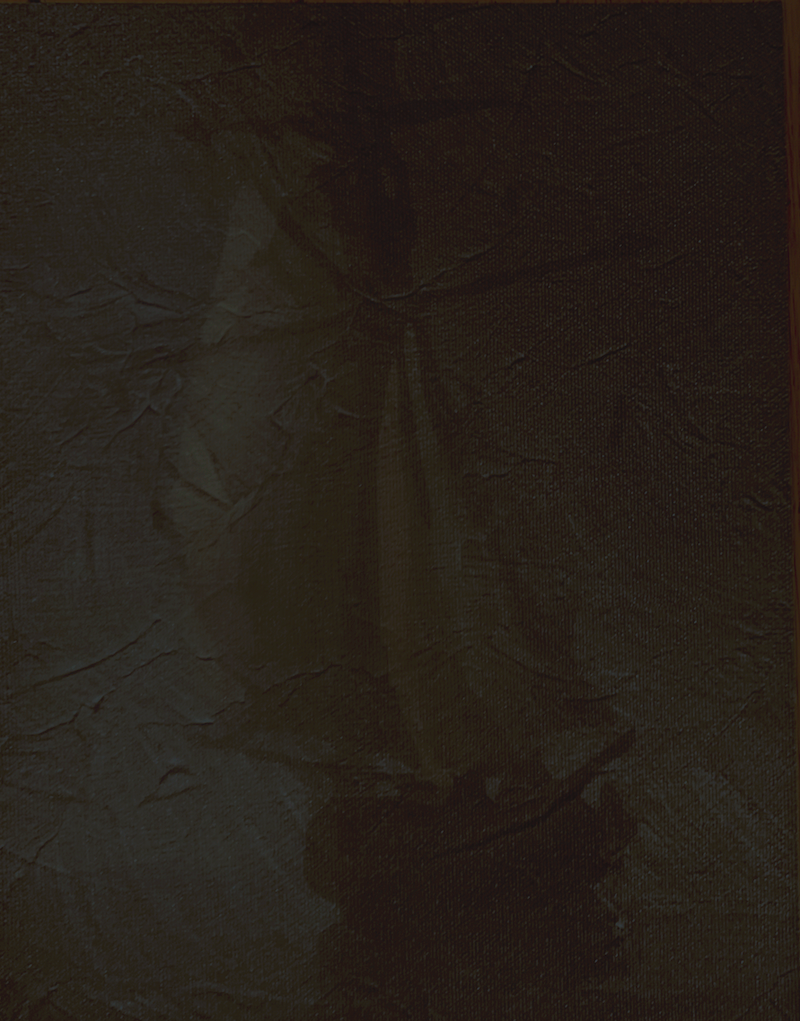
Yes, it’s this dark.
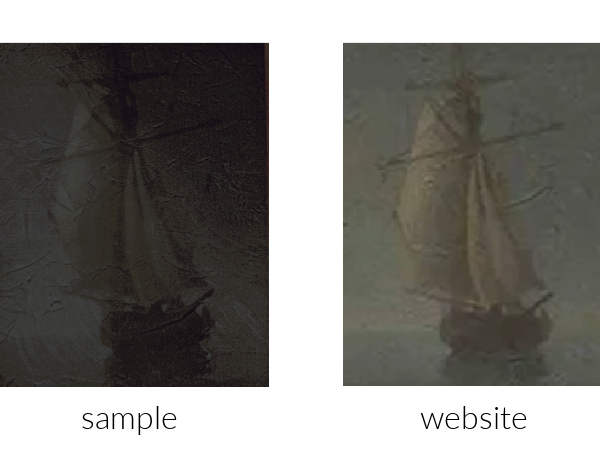
Above is a comparison of my sample and the image on the Fine and Dandy website. Please understand that on this one, I am not looking at resolution. However, I’m concerned that the sample is significantly darker than what they show on the website. This is why samples are imperative!
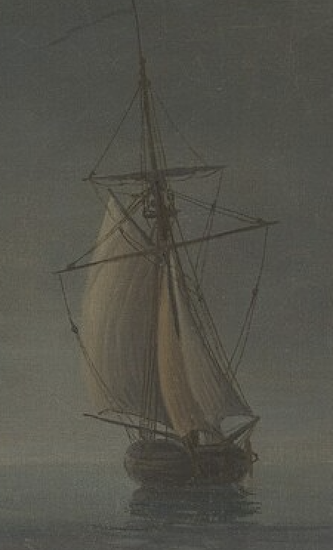
This is the same boat (above) in the original painting. (on the far right, below) The only reason this image is so clear is because the original piece is high-resolution. Scrolling back up, you’ll see that the original and the reproduction are virtually identical. And yet, my life-size sample from Fine and Dandy has none of the detail you see above in this tiny section of the photo of the original artwork.

While I love the artwork, when I look at my sample and how dark and lacking in detail it is, I’m trying to understand how the little image on the website appears to have more detail than my life-size sample.
Our last piece is Babylon, which first captured my attention when searching for a verdant wall mural a few weeks ago.
This is the one where they took a 12″ x 17″ etching and blew it up to ten times that size.
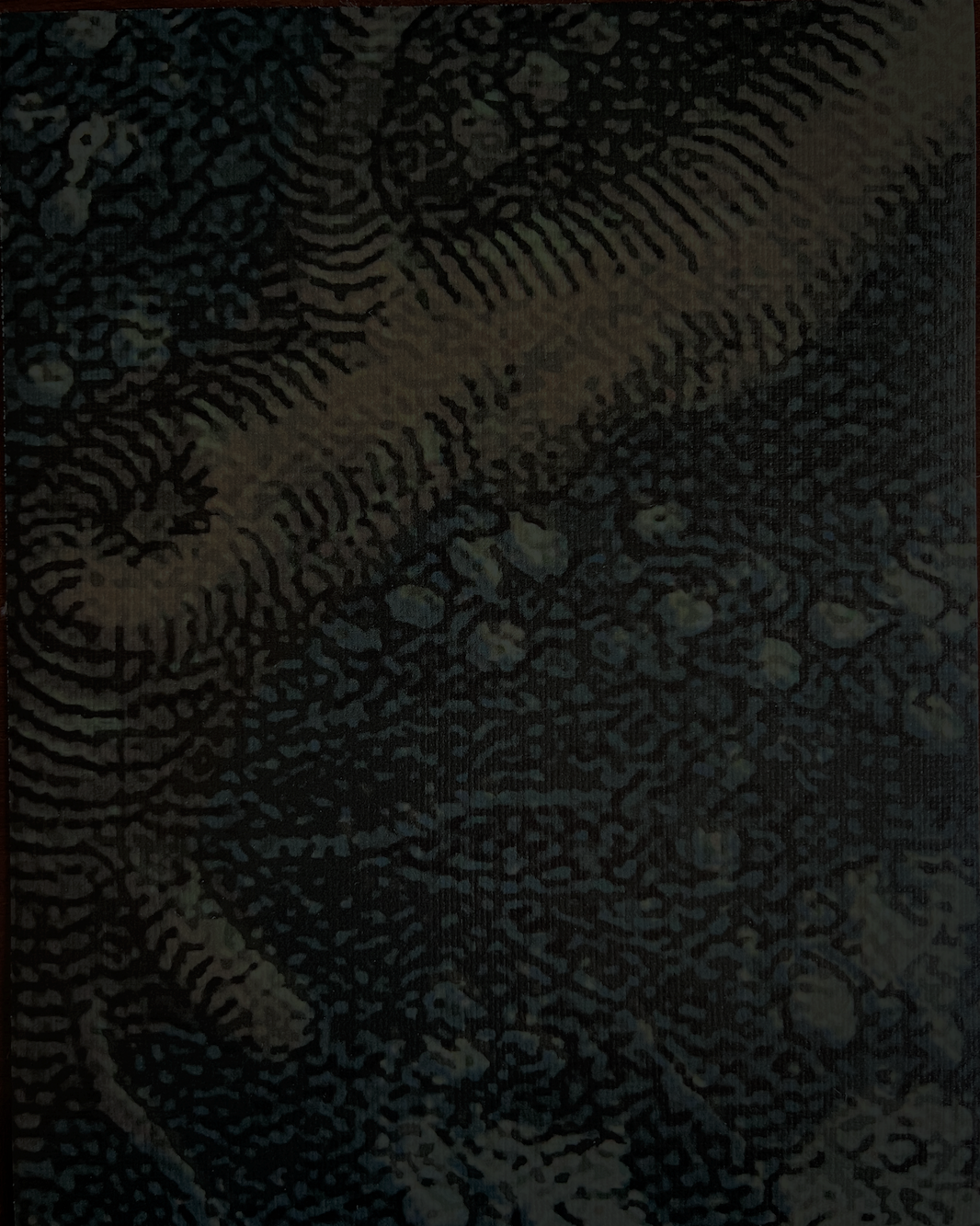
My sample is 8.5″ wide and is reduced by maybe 10% on my computer screen.
Do you see the problem?
 Wisely, they put the image on the back of the sample and then indicate what you’re looking at. It’s a good thing because when I look at the sample, mostly I see a bunch of heavy lines and dots. However, the thing on the top reminds me of a lizard.
Wisely, they put the image on the back of the sample and then indicate what you’re looking at. It’s a good thing because when I look at the sample, mostly I see a bunch of heavy lines and dots. However, the thing on the top reminds me of a lizard.
Is there a word for this? It’s not pixelated, but it’s hugely distorted because no one renders an etching with such fat ink strokes.
You need to pull back a good eight feet for all of the little dots to come together to clearly be a tree branch and not a snake.
So, I’m not saying not to get this mural. Not at all. I’m saying don’t put it in a 4.5′ x 6.5′ entry (like I have), in a powder room, or a long hall unless it’s a hall in Versailles that’s 20 feet wide.
But, Laurel, don’t all large reproduction murals have the same issue?
That’s a great question, and the answer is no, they don’t. To avoid the issue of grotesquely enlarged scale, the mural should be rendered at the actual scale it’s meant to be seen as in the reproduction.
That’s what the Mural Source does. Paul Montgomery works his magic on a life-size canvas, and when it’s finished, they produce a print so vivid and clear that it looks to be the real thing. I can attest to this because I lived with one of his gorgeous printed murals for nearly three years.
As far as Fine and Dandy goes, I think the owners take a lot of pride in their product. They show most of their work in grand, opulent settings, and that scale is needed for many of their pieces to truly shine. Like I said in my original comments, their marketing and Instagram pages are brilliant.
Another thing about the company is their use of the unexpected in many of their wall coverings that aren’t murals.
For example, one gorgeous damask wallcovering has a human skull as part of its design. That’s not for everyone, but I enjoyed looking at these macabre/whimsical designs.
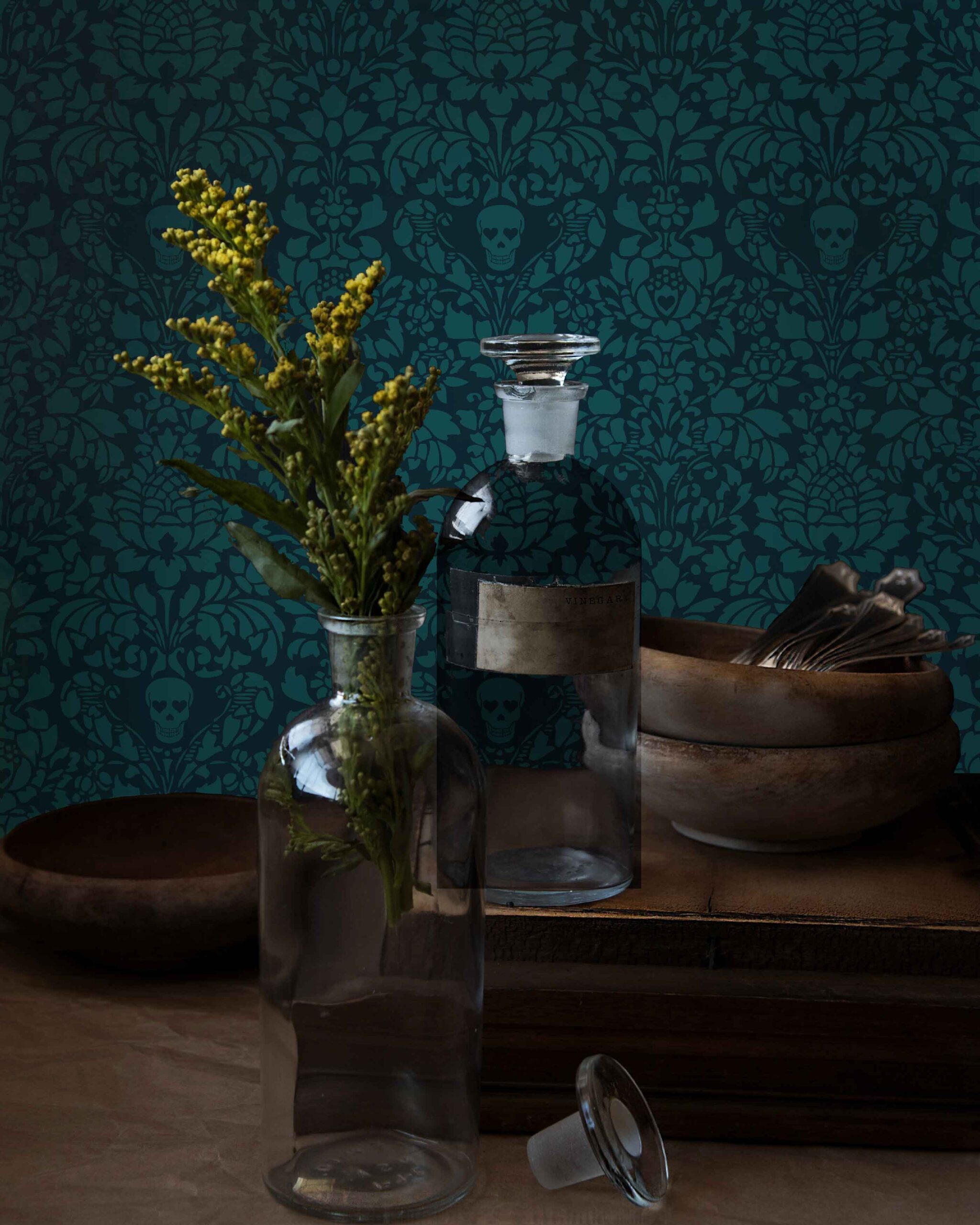
Neapolitan Cyanide
Please do check out the Neopolitan Sorbet. Yummy!
This is wonderful because one can get a true sense of the pattern’s scale. You could put this in pretty much any space.
But, see what I mean? The photography, styling, and colors can’t be beaten. Exquisite.
Okay, as Carla wished me to do, I revised my statement to reflect their methodology based on what she said and what I observed after seeing the samples of the real murals.
There’s a market for these large-scale, bold wall coverings. However, one needs to be mindful of scale. I mean, what are you going to say when your guests tell you how cool your lizard wallpaper is in the powder room?
By the way, I am not singling out this company. I’ve come to realize that this issue of blowing up small pieces of art is an issue for many companies. I see the same thing with many pieces at Ananbo, and I love that company. It isn’t an issue if what is reproduced is close to the size of the original piece of art.
Please tell me what you think in the comments.
xo,
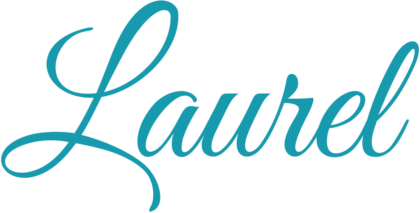
***Please check out the recently updated HOT SALES!
There is now an Amazon link on my home page and below. Thank you for the suggestion!
Please note that I have decided not to create a membership site. However, this website is very expensive to run. To provide this content, I rely on you, the kind readers of my blog, to use my affiliate links whenever possible for items you need and want. There is no extra charge to you. The vendor you’re purchasing from pays me a small commission.
To facilitate this, some readers have asked me to put
A link to Amazon.com is on my home page.
Please click the link before items go into your shopping cart. Some people save their purchases in their “save for later folder.” Then, if you remember, please come back and click my Amazon link, and then you’re free to place your orders. While most vendor links have a cookie that lasts a while, Amazon’s cookies only last up to 24 hours.
Thank you so much!
I very much appreciate your help and support!
Related Posts
 An Insider’s View into Stunning Custom Kitchen Details
An Insider’s View into Stunning Custom Kitchen Details This is How I’m Creating a Cohesive Color Palette
This is How I’m Creating a Cohesive Color Palette A Gorgeous Modern Rental Home With A Tacky Kitchen
A Gorgeous Modern Rental Home With A Tacky Kitchen She Fears Her Trendy, Painted Antique Table is a Mistake
She Fears Her Trendy, Painted Antique Table is a Mistake A Home Party Room Design – No Kids Allowed!
A Home Party Room Design – No Kids Allowed! Barbara Barry, A Household Name You’ve Never Heard Of
Barbara Barry, A Household Name You’ve Never Heard Of Finding Bathroom Storage For A Small Difficult Bathroom
Finding Bathroom Storage For A Small Difficult Bathroom


